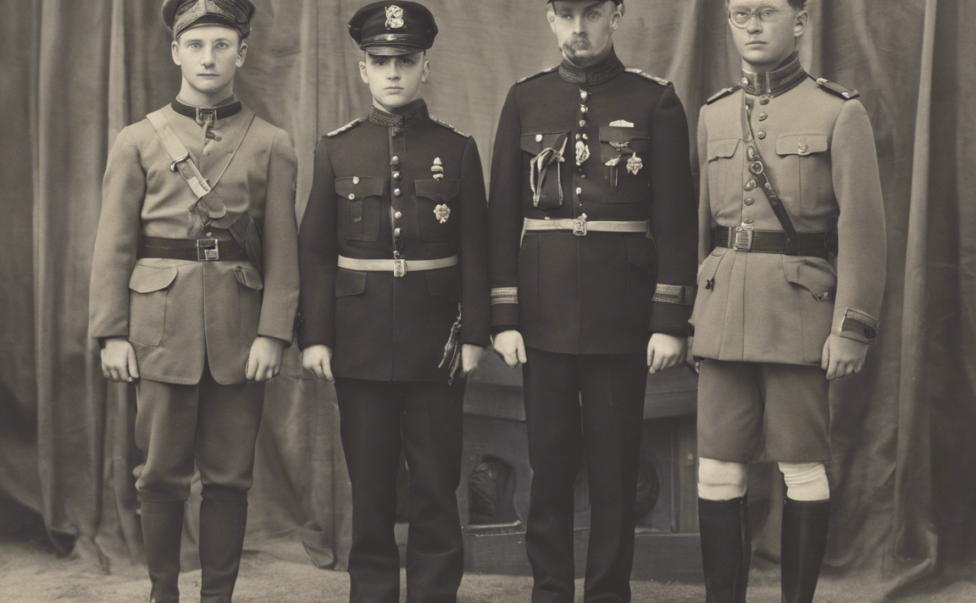A Uniform or An Outfit: Which Should You Choose?
Fashion is a means of self-expression, a reflection of one’s personality, and a way to showcase individual style. When choosing what to wear, the decision between wearing a uniform or an outfit can have various implications on how we present ourselves to the world. Both options offer unique benefits and considerations that can influence our day-to-day experiences. In this comprehensive guide, we will delve into the nuances of wearing a uniform versus an outfit, exploring the factors to consider and the impact each choice can have on our lives.
Uniform vs. Outfit: Understanding the Difference
Uniform
Wearing a uniform entails donning a specific set of clothing designated for a particular purpose or setting. Uniforms are standardized attire often associated with professions, schools, organizations, or specific events. The primary characteristics of a uniform include:
- Consistency: Uniforms ensure a standard appearance among individuals within a defined group.
- Identification: Uniforms help to identify the wearer’s role, affiliation, or organization.
- Professionalism: In many cases, uniforms convey a sense of professionalism and instill trust and confidence.
Outfit
An outfit, on the other hand, refers to a combination of garments and accessories chosen by an individual for a specific occasion or personal expression. Outfits are highly customizable and reflect one’s personal taste, style preferences, and fashion sensibilities. Key features of an outfit include:
- Individuality: Outfits allow for unique self-expression and creativity.
- Versatility: Outfits can be tailored to suit different moods, occasions, and settings.
- Personalization: Outfits enable individuals to showcase their personality and preferences through clothing choices.
Factors to Consider: Choosing Between a Uniform and an Outfit
1. Purpose
- Uniform: If your role or profession requires a uniform, wearing one can signify professionalism and adherence to organizational standards.
- Outfit: For casual settings or personal outings, selecting an outfit allows for more freedom in expressing individual style and preferences.
2. Comfort
- Uniform: While uniforms provide a consistent look, they may not always prioritize comfort or personal preferences in terms of fit or fabric.
- Outfit: Building an outfit tailored to your comfort preferences can ensure you feel confident and at ease throughout the day.
3. Self-expression
- Uniform: Uniforms may limit opportunities for self-expression but can foster a sense of unity and belonging within a group or organization.
- Outfit: Crafting your outfits allows for showcasing your personality, creativity, and style through clothing choices.
4. Occasion
- Uniform: Certain events or settings may necessitate wearing a uniform for identification or practical purposes.
- Outfit: Choosing an outfit lets you adapt to diverse occasions, whether formal, casual, or themed, while reflecting your personal aesthetic.
5. Maintenance
- Uniform: Uniforms typically require adherence to specific guidelines for maintenance and cleanliness to preserve a unified look.
- Outfit: Outfits may offer more flexibility in terms of care and maintenance, allowing for a wider range of fabrics and styles.
Impact of Wearing a Uniform or an Outfit
1. Psychological Effects
Uniform
Wearing a uniform can evoke a sense of belonging, discipline, and professionalism. It may also reduce decision fatigue by streamlining the clothing selection process.
Outfit
Choosing your outfits can boost confidence and mood by allowing you to express personal style. It offers a creative outlet for self-expression and can influence how others perceive you.
2. Social Perception
Uniform
Uniforms can establish a sense of unity and equality within a group while signaling authority or expertise in certain professions.
Outfit
Outfits can convey individuality, social status, and cultural influences, shaping initial impressions and interactions with others based on your style choices.
3. Functional Considerations
Uniform
In professions requiring specific attire for safety or identification purposes, uniforms serve a functional role in ensuring efficiency and adherence to regulations.
Outfit
Outfits tailored to comfort, weather conditions, or activities can enhance practicality and mobility in daily tasks, contributing to overall well-being and functionality.
FAQs (Frequently Asked Questions)
1. Can I mix elements of a uniform with my own personal style?
While maintaining the core elements of a uniform for identification purposes, incorporating small personal touches such as accessories or footwear can help infuse your personality into the uniform.
2. How do I strike a balance between adhering to a dress code and expressing my style at work?
Opt for versatile pieces that align with your workplace dress code while reflecting your personal style through colors, fits, or accessories.
3. Are there benefits to having a personal “uniform” for everyday dressing?
Creating a personal uniform or signature style can streamline your daily dressing routine, minimize decision-making, and establish a consistent image.
4. What role do accessories play in enhancing a uniform or outfit?
Accessories can elevate both uniforms and outfits by adding flair, personality, and uniqueness to your overall look, whether through jewelry, scarves, bags, or shoes.
5. How can I navigate dress codes that require both uniformity and individuality?
Find ways to incorporate subtle variations such as textures, patterns, or fits within the prescribed dress code parameters to showcase your individuality while respecting uniformity guidelines.
In conclusion, the choice between wearing a uniform or an outfit ultimately depends on the context, purpose, personal preferences, and practical considerations. Both options offer distinct advantages in terms of identity, self-expression, functionality, and social perception. Whether you opt for the consistency and professionalism of a uniform or the creativity and individuality of an outfit, your clothing choices can play a significant role in shaping how you present yourself to the world. Embrace the flexibility and power of dressing to reflect your unique personality while adapting to different roles and environments with style and confidence.

